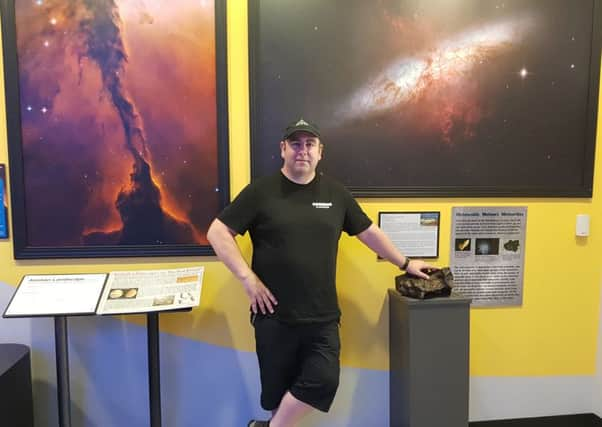Astronomer aims to give 360-degree view of US eclipse


But a Scots amateur astronomer will be there recording every second to bring home 360-degree footage for Scots to experience the wonder of the total solar eclipse as it unfolds on 21 August.
Steven Gray, a former printer, is in Carbondale, Illinois – the best place to film the eclipse’s two minutes and 40 seconds of darkness “totality” – as part of a six-week fully funded 2017 Winston Churchill Memorial Travelling Fellowship during which he will talk to US astronomers and visit leading planetariums.
Advertisement
Hide AdAdvertisement
Hide AdThe total solar eclipse, the first in almost 100 years, will see the moon pass in front of the sun, casting a shadow on the Earth’s surface beginning near Lincoln City, Oregon, and ending near Charleston, South Carolina.
The path of this shadow, also known as the “path of totality” will plunge those regions into near darkness.
In Edinburgh, a tiny fraction of the sun will be hidden at 7.58pm.
Gray, from Winchburgh, West Lothian, quit his printing job to set up Cosmos Planetarium, a six-metre 360-degree multimedia mobile planetarium, with his business partner James Green in 2014.
They take their mobile planetarium across Scotland giving virtual tours of the universe and also showing 360-degree full-dome movies on subjects such as the last moon walk and the hunt for dark matter which people can enjoy through virtual reality headsets.
“In March 2015 we took eclipse glasses in for the children at Kirkliston Primary School in West Lothian to see a partial solar eclipse. The reaction of the kids was fantastic: they were squealing with delight,” Gray said.
“I told the interview panel for the Churchill Fellowship about it and how I’d been thinking of how I could replicate that magic for everyone.
“To be just someone with a telescope and be here doing this is incredible.”
Advertisement
Hide AdAdvertisement
Hide AdProfessor John Brown, Astronomer Royal for Scotland, said: “I’ll be crossing my fingers for Steven and hope it’s clear along the path for filming so he can bring the glory and excitement of a total eclipse home to Scotland and give everyone hands-on experience from someone who was actually there.”
Julia Weston, chief executive of the Winston Churchill Memorial Trust, which awards up to 150 fellowships annually, said: “Steven’s project demonstrates how inspirational a Churchill Fellowship can be. Using a 360-degree camera, he will create a spectacular record of the first total solar eclipse visible across the entire United States for nearly 100 years. His film will capture all the drama and excitement of this momentous event.
“We hope Steven’s film will encourage great interest in astronomy and the natural world among young people, and indeed everyone who sees it, and help to inspire the next generation of scientists.”